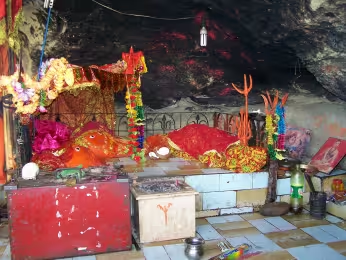
Hinglaj Mata Temple is one of Hinduism’s 51 Shakti Peeths believed to be the site where Goddess Sati’s head fell
Balochistan, Pakistan’s largest yet most volatile province, has long been at the center of political unrest. As separatist movements gain momentum, an unexpected consequence has emerged, renewed attention on two historic Hindu temples: Hinglaj Mata Temple and Katas Raj Temple. These sacred sites, deeply rooted in Hindu mythology, are now being discussed in the context of Balochistan’s independence struggle, highlighting the region’s complex cultural and religious history.
The Growing Independence Movement in Balochistan
The Baloch independence movement has intensified in recent years, with rebel groups openly declaring their desire to break away from Pakistan. The province has witnessed decades of conflict, with grievances over resource exploitation, human rights violations, and military suppression fueling separatist sentiments. As calls for independence grow louder, the spotlight has inadvertently turned to the region’s Hindu heritage, particularly the revered Hinglaj Mata Temple.
Hinglaj Mata Temple: Pakistan Forgotten Hindu Temples – A Sacred Hindu Pilgrimage Site
Located in Balochistan’s Lasbela district, Hinglaj Mata Temple is one of Hinduism’s 51 Shakti Peeths believed to be the site where Goddess Sati’s head fell. Despite its distant position and difficult access methods, the temple, which is tucked away in the untamed landscape of Hingol National Park, welcomes hundreds of Hindu pilgrims each year. Interestingly, Hinglaj Mata is also revered by some local Muslims, who refer to the deity as Nani Pir, showcasing the interfaith significance of the site.
The Hinglaj Yatra, an annual pilgrimage, sees devotees from India and Pakistan undertaking a strenuous journey through the desert to seek blessings. However, political instability and strained India-Pakistan relations have made access increasingly difficult. With Balochistan’s independence movement gaining traction, questions arise about the future of this sacred site, will it receive greater recognition, or will it remain caught in the crossfire of geopolitical tensions?
Katas Raj Temple: A Forgotten Hindu Legacy
While Hinglaj Mata Temple lies within Balochistan, Katas Raj Temple, located in Chakwal, Punjab, also finds itself linked to the region’s Hindu heritage. Dedicated to Lord Shiva, the temple complex features the sacred Katas Kund, a lake believed to have formed from Shiva’s tears as he mourned the loss of Sati. The temple, once a thriving center of Hindu learning, has suffered neglect post-Partition, with limited access for Indian pilgrims due to political tensions.
Despite its historical significance, Katas Raj Temple has faced challenges, including environmental degradation and water depletion due to industrial activities. As Balochistan’s independence movement gains global attention, discussions surrounding the preservation of Hindu heritage in Pakistan have resurfaced, raising concerns about the fate of these ancient sites.
The Intersection of Politics and Heritage
The fact that Balochistan’s quest for independence has brought Hinglaj Mata and Katas Raj Temples back into the spotlight highlights how closely politics and cultural heritage are intertwined. The temples serve as reminders of Pakistan’s varied but frequently disregarded religious past in addition to symbolizing Hinduism’s longstanding presence in the area. The Baloch struggle for autonomy has inadvertently brought these sites into mainstream discourse, prompting debates on religious freedom, historical preservation, and cross-border cultural ties.
Conclusion
The unfolding political landscape in Balochistan has inadvertently cast a spotlight on Pakistan forgotten Hindu temples. Hinglaj Mata and Katas Raj Temples, once thriving centers of Hindu devotion, now find themselves entangled in a broader narrative of identity, heritage, and political struggle. As the independence movement progresses, the fate of these sacred sites remains uncertain, will they be preserved and celebrated, or will they continue to fade into obscurity?
2 thoughts on “Pakistan Forgotten Hindu Temples & Balochistan Independence Drive”